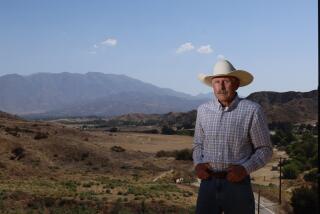PICO-UNION : Supermarkets Top Residents’ Wish List
- Share via
If they had their wish, most residents would like to see supermarkets fill some of the lots in the Pico-Union area left vacant by the 1992 riots.
Almost 60% of local residents responding to a survey by RLA, formerly Rebuild L.A., said that a supermarket or grocery store is the one retail service most needed in the area. Most say they travel an average of 3 1/2 miles to get to the nearest store. Half either walk, depend on rides or use public transportation.
The survey targeted areas most affected by the 1992 riots that still have a large number of vacant lots, including Pico-Union and several South-Central neighborhoods. More than 1,000 people, predominantly Latinos and African Americans, from the two areas were interviewed by USC students from September through February.
RLA officials hope to use the results to convince prospective developers and retail chains to invest in these resource-needy communities.
A major selling point is the buying power of inner-city dwellers. Although more than half earn less than $20,000 a year, a high percentage of the money goes to groceries: nearly $100 per week with an average of seven visits per month for those in the survey.
“This will help developers and distributors understand what the need is,” said Russ Calleros, who coordinated the survey for RLA. “When they see this hard data, they’ll understand the magnitude of the buying power that’s there.”
RLA has worked to encourage the economic redevelopment of the city’s riot-scarred neighborhoods since shortly after the riots. The survey results will also go to City Council members whose districts encompass the areas studied, so that they might use the data as a tool for encouraging redevelopment, Calleros said.
Although many other communities suffered property damage as a result of the riots, RLA director Linda Griego said these neighborhoods were singled out because they suffered the most extensive damage. Less than 10% of the vacant lots in these areas were empty before April, 1992.
“A lot of services are not there now as a result [of the riots],” Griego said. “If those properties are not restored somehow, the retail around them may go down and we could risk losing more businesses.”
Supermarkets were deemed the most needed retail service by Pico-Union and South-Central residents alike. The next most needed service mentioned was department or clothing stores; survey respondents said they must travel an average of almost six miles to get to such facilities.
Most said that the reason they shop where they now do for groceries, clothing and other basic needs where they now do is because they have nowhere else to go.
According to Calleros, many longtime residents interviewed said their neighborhoods once had the retail services they now lack. These stores have disappeared, partly because of the riots and partly because of urban blight, he said.
RLA has begun working with UCLA students to photograph and map out existing retail services in the areas studied to convince potential developers of the communities’ needs and to assure existing businesses they won’t be encroached upon.
More to Read
Sign up for Essential California
The most important California stories and recommendations in your inbox every morning.
You may occasionally receive promotional content from the Los Angeles Times.










